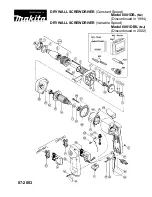
ML50.100, ML50.109
MiniLine
24V, 2.1A, S
INGLE
P
HASE
I
NPUT
Mar. 2007 / Rev. 1.0 DS-ML50.100-EN
All parameters are specified at 24V, 2.1A, 230Vac, 25°C ambient and after a 5 minutes run-in time unless otherwise noted.
www.pulspower.com Phone +49 89 9278 0 Germany
17/20
27.3. S
ERIES
O
PERATION
The power supply can be put in series to increase the output voltage.
Fig. 27-3
Schematic for series operation
Instructions for use in series:
Earth
Unit A
AC
DC
Unit B
AC
DC
-
+
-
+
Load
+
-
a)
It is possible to connect as many units in series as needed,
providing the sum of the output voltage does not exceed
150Vdc.
b)
Voltages with a potential above 60Vdc are not SELV any
more and can be dangerous. Such voltages must be installed
with a protection against touching.
c)
For serial operation use power supplies of the same type.
d)
Earthing of the output is required when the sum of the
output voltage is above 60Vdc.
Note: Avoid return voltage (e.g. from a decelerating motor or
battery) which is applied to the output terminals.
27.4. P
ARALLEL
U
SE TO
I
NCREASE
O
UTPUT
P
OWER
Several power supplies can be paralleled to increase the output power. The ML50.100 has no feature included which
balances the load current between the power supplies. Usually the power supply with the higher adjusted output
voltage draws current until it goes into current limitation. This means no harm to this power supply as long as the
ambient temperature stays below 50°C. If a current sharing feature is required, choose the ML50.101 or ML50.111.
Fig. 27-4
Schematic for parallel operation
Instructions for parallel use:
Unit A
AC
DC
Unit B
AC
DC
-
+
-
+
Load
+
-
a)
Use only power supplies from the same series (ML-Series).
b)
Adjust the output voltages of all power supplies to
approximately the same value (±200mV).
c)
A fuse (or diode) on the output is only required if more than
three units are connected in parallel.
d)
Do not load terminals with more than 13A. Follow wiring
instructions according to chapter 27.6
e)
Ensure that the ambient temperature of the power supply
does not exceed 50°C.
27.5. P
ARALLEL
U
SE FOR
R
EDUNDANCY
Power supplies can be paralleled for redundancy to gain a higher system reliability. Redundant systems require a
certain amount of extra power to support the load in case one power supply unit fails. The simplest way is to put two
MiniLine power supplies in parallel. This is called a 1+1 redundancy. In case one power supply unit fails, the other one
is automatically able to support the load current without any interruption. Redundant systems for a higher power
demand are usually built in a N+1 method. E.g. Five power supplies, each rated for 2.1A are paralleled to build a 8A
redundant system. If one unit fails, the 8A can still be drawn.




































